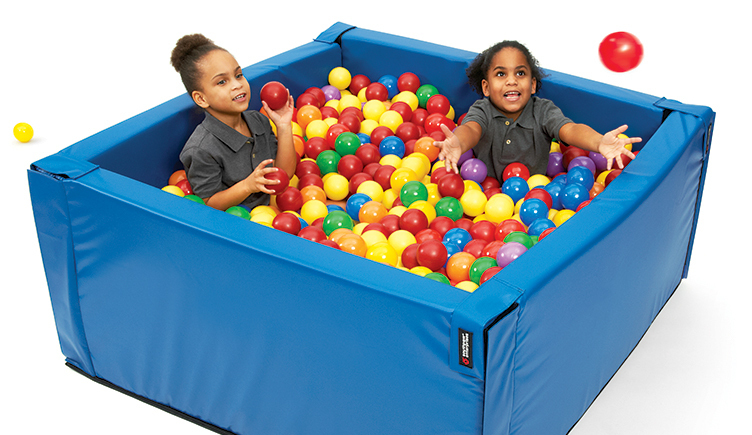At a small rural university nestled in the heart of the community, master’s-level occupational therapy (OT) students at Saint Francis University are learning the art and science of pediatric OT through a transformative, hands-on, community-engaged lab experience. This innovative lab is part of the Advanced Topics in Pediatric OT course offered in the spring semester of their senior year and is redefining how future therapists learn while simultaneously enriching the lives of local children and families.
Now approaching its third year, the Reflex Integration Lab runs as a six-week, community-engaged program that welcomes children who demonstrate a need for occupational therapy services, many of whom might not otherwise have access to care. This model creates a unique partnership between the university and the surrounding community, ensuring mutual benefit. Students gain advanced clinical experience under close supervision from the OT faculty member, and the children receive focused, research-informed sessions designed to promote growth, development, and functional independence in all aspects of the child’s daily life.
Primitive reflexes are automatic movements that emerge in infancy and provide the foundation for later motor and sensory development. When these reflexes remain active beyond the age at which they should have been integrated, they can interfere with a child’s coordination, learning, and overall ability to engage successfully in daily life (Smet & Lucas, 2020). The purpose of the Reflex Integration Lab is to identify and address these retained reflexes through therapeutic interventions that help children integrate them and build higher-level motor patterns. During the lab, OT students begin by conducting comprehensive evaluations that include reflex testing and standardized assessments such as the Bruininks-Oseretsky Test of Motor Proficiency (BOT-II) and the Beery-Buktenica Developmental Test of Visual-Motor Integration (Beery VMI). These tools help students identify areas of need and set measurable goals for each child.
Central to these interventions is the use of high-quality, developmentally supportive equipment designed to enhance sensory and motor integration. Saint Francis University’s OT program proudly utilizes an array of Southpaw products, which support both this lab and many other hands-on pediatric courses throughout the curriculum. Children often step into sessions greeted by bright Riverstones, which promote balance, coordination, and motor planning as they hop, step, and stretch from one to another. The Platform Swing and Bolster Swing become dynamic spaces where students facilitate graded movement experiences to improve vestibular processing, muscle tone, and postural control. Meanwhile, the Sling Swing offers calming, proprioceptive input, which is ideal for helping children develop body awareness and regulate their sensory systems.
Peanut balls and the Rocking Barrel provide opportunities for strengthening and core stability, while Parachute games encourage teamwork, visual tracking, and social interaction. Sensory balls round out the environment, adding more opportunities for sensory input, core strengthening, and of course, playfulness to each session. These tools not only bring movement, motivation, and measurable progress to each session, but also make therapy engaging and fun by focusing on a child’s most essential occupation: play.
The Reflex Integration Lab highlights what can be achieved when classroom learning meets community need. OT students not only refine their clinical reasoning and therapeutic handling skills but also gain firsthand experience in developing individualized treatment plans, adapting interventions, and communicating progress to families. For many of these OT students, the lab represents a formative step toward becoming confident, compassionate clinicians who understand the complexities of pediatric practice. For the children and families involved, the lab has an equally powerful impact. Engaging in consistent, purposeful therapy sessions helps children improve postural stability, coordination, attention, and independence—skills that directly translate to success at school, at home, and on the playground. Parents often report improvements not just in physical ability, but in self-esteem and daily participation.
Programs like this illustrate how community-engaged education and evidence-based equipment can transform lives. As the Reflex Integration Lab continues to grow, it serves as a model for how small universities can make a big impact, one child, one student, and one reflex at a time. Through the use of Southpaw’s versatile equipment and a curriculum designed to empower both learners and clients, the Saint Francis University Master of Occupational Therapy program continues to build bridges between education, service, and real-world change.
References
Smet, N., & Lucas, C. (2020). Occupational Therapy View of Child Development. In J. C. O'Brien, & H. Kuhaneck, Case-Smith’s Occupational Therapy for Children and Adolescents (pp. 76-109). St. Louis: Elsevier.



